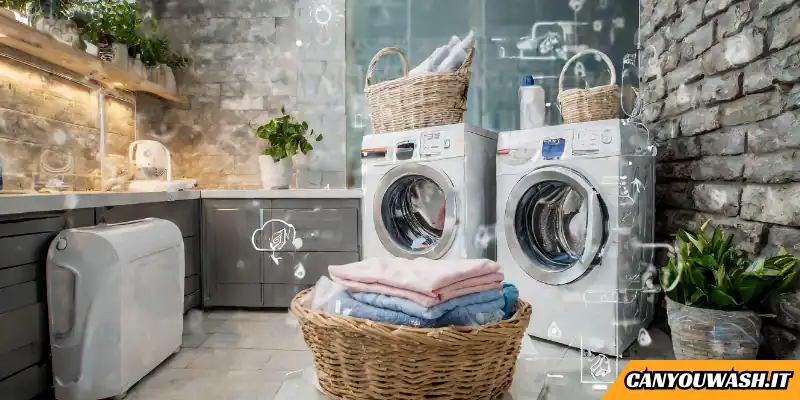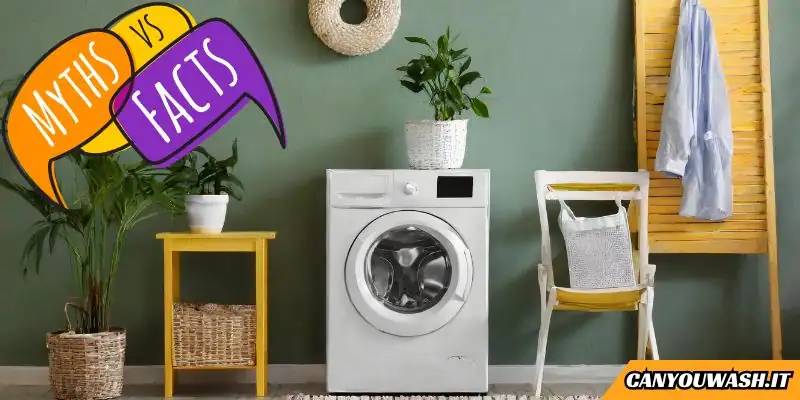Yes, most electric blankets are designed to be easily washable, and many can be machine washed after removing the plug and controller. The internal wiring of these blankets is typically waterproof to withstand sweat and moisture produced during sleep.
Dos and don’ts
Dos
- Read the manufacturer’s instructions: Follow the specific guidelines provided by the manufacturer for washing and caring for your electric blanket.
- Remove electrical components: Before washing, always detach the plug and controller from the blanket as directed by the manufacturer.
- Spot clean stains: Address any stains or spills on the blanket by spot cleaning them using a mild detergent or stain remover.
- Hand wash if recommended: If permitted by the manufacturer, you can hand wash the blanket in a tub or basin with lukewarm water and a mild detergent. Gently agitate the blanket without twisting or scrubbing vigorously.
- Rinse thoroughly: Ensure that you rinse the blanket thoroughly with clean water to remove any soap residue after washing.
- Dry properly: Squeeze out excess water gently without twisting or wringing the blanket. Air dry it by hanging or lay it flat on a clean surface until completely dry before reconnecting any electrical components.
Don’ts
- Don’t machine wash unless instructed: Avoid machine washing unless the manufacturer explicitly states that it is safe for your electric blanket.
- Don’t submerge electrical components: Never immerse the plug or controller in water or expose them to moisture. Always remove them before washing.
- Don’t use harsh chemicals: Avoid using harsh detergents, bleach, or fabric softeners as they can damage the blanket’s materials or affect its electrical components.
- Don’t wring or twist vigorously: Refrain from twisting, wringing, or applying excessive pressure to the blanket during the washing or drying process, as it can damage the wiring or heating elements.
- Don’t use high heat: Avoid using high heat sources such as radiators or direct sunlight to dry the blanket, as excessive heat can damage the electrical components.
- Don’t fold or store damp: Make sure the blanket is completely dry before folding or storing it to prevent the growth of mold or mildew.
5-step guide to washing heated blankets
Step 1
Read the manufacturer’s instructions: Carefully review the instructions provided by the manufacturer for your specific electric blanket. Follow their guidelines and recommendations for the best way to wash and care for the blanket.
Step 2
Prepare the blanket for washing: Unplug the blanket from the power source and detach any electrical components, such as the plug and controller, according to the manufacturer’s instructions. Make sure the blanket is ready for washing without any electrical connections.
Step 3
Spot clean any stains: If there are any visible stains or spills on the blanket, spot clean them using a mild detergent or stain remover. Gently dab the affected areas with a clean cloth or sponge, being careful not to saturate the blanket with excessive moisture.
Step 4
Choose the appropriate washing method: Depending on the manufacturer’s instructions, you can either hand wash or machine wash the electric blanket. If hand washing is recommended, fill a tub or basin with lukewarm water and a mild detergent. Submerge the blanket and gently agitate it without twisting or scrubbing vigorously. If machine washing is permitted, place the blanket in the washing machine and select a gentle or delicate cycle with cool or lukewarm water. Avoid using harsh detergents or fabric softeners.
Step 5
Dry the blanket properly: After washing, remove the blanket from the water or washing machine and gently squeeze out excess water without twisting or wringing it. Avoid applying excessive pressure. Air dry the blanket by hanging it or lay it flat on a clean surface. Ensure it is completely dry before reconnecting any electrical components or storing it.
FAQs
Can I wash my electric blanket in a washing machine?
In many cases, electric blankets can be washed in a washing machine. However, it is essential to consult the manufacturer’s instructions for your specific electric blanket model. Follow their recommendations regarding the washing machine settings, water temperature, and any other specific guidelines for machine washing.
How should I dry my electric blanket after washing?
After washing, it is crucial to dry the electric blanket properly. The recommended method is to air dry the blanket by either hanging it or laying it flat on a clean surface. Avoid using high heat sources such as radiators or direct sunlight, as excessive heat can damage the electrical components. Ensure that the blanket is completely dry before reconnecting any electrical components or storing it.
Can I remove the electrical components before washing the electric blanket?
Yes, it is important to detach the electrical components, such as the plug and controller, before washing the electric blanket. Refer to the manufacturer’s instructions for specific guidance on how to remove these components safely. By removing the electrical components, you can avoid damaging them during the washing process and ensure the safety of the blanket.
Final thoughts 💭
Washing heated blankets requires careful attention to ensure both cleanliness and the safety of the electrical components. While most electric blankets are made from washable materials, it is crucial to review the manufacturer’s instructions for specific guidance. Generally, the process involves removing the plug and controller before spot cleaning stains or hand washing the blanket with a mild detergent.
Alternatively, newer models may be suitable for machine washing on a gentle cycle. Proper drying is vital, with the blanket being air-dried or laid flat until completely dry before reassembling any electrical components. Following the manufacturer’s instructions is essential to maintain the functionality and longevity of the heated blanket.





Leave a Reply